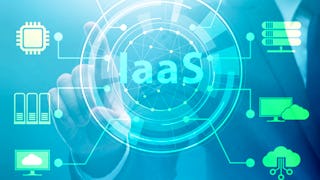In this course, learners will unlock the potential of automation for computer fleet management. This course provides a solid foundation in automation techniques, offering a pathway to becoming a versatile IT professional prepared to launch and support modern cloud based applications and systems. This course covers the art of automating computer deployment and management in a cloud-based environment, including the configuration of virtual machines using Puppet and managing infrastructure resources through orchestration tools like Terraform and command-line interfaces (CLIs). Learners will also explore how to define Service-Level Objectives (SLOs) and implement monitoring and actionable alerting systems to swiftly address issues. They’ll also gain expertise in incident management and recovery, including rollbacks, redundancy, and creating disaster recovery plans.


Configuration Management and the Cloud
This course is part of Google IT Automation with Python Professional Certificate

Instructor: Google Career Certificates
122,142 already enrolled
Included with
(2,635 reviews)
What you'll learn
Understand the benefits of configuration management and infrastructure as code
Manage a fleet of computers using Puppet
Automatically deploy new virtual machines running in the Cloud
Deploy changes in a safe manner following CICD principles
Skills you'll gain
- Service Level
- Cloud Services
- Puppet (Configuration Management Tool)
- System Monitoring
- Cloud Management
- Incident Management
- Cloud Storage
- Change Control
- Cloud Infrastructure
- Automation
- Software As A Service
- Virtual Machines
- Cloud Computing
- Infrastructure As A Service (IaaS)
- Scalability
- Configuration Management
- Infrastructure as Code (IaC)
- Disaster Recovery
- Release Management
- Terraform
Details to know

Add to your LinkedIn profile
16 assignments
See how employees at top companies are mastering in-demand skills

Build your Cloud Computing expertise
- Learn new concepts from industry experts
- Gain a foundational understanding of a subject or tool
- Develop job-relevant skills with hands-on projects
- Earn a shareable career certificate from Google

There are 4 modules in this course
In this module, you’ll be introduced to the concept of automation at scale and how it can be successfully achieved. You’ll learn what it means to work at scale and how automation is needed to scale effectively. Next, you’ll be introduced to configuration management. You’ll learn the differences between unmanaged and managed configuration management. Then, you’ll dive into infrastructure as code and learn about the benefits it brings, like making your fleet of nodes more reliable and repeatable. This is a major benefit when managing systems at scale. In the next lesson, you’ll be introduced to Puppet. You’ll learn how to apply basic configuration management and how Puppet agents and masters interact with each other. Next, you’ll do a rundown of Puppet resources and classes. You’ll learn how resources are basic units for modeling your configurations and how classes are a collection of resources used to achieve a single goal. The final lesson will introduce you to the building blocks of domain-specific language. You’ll learn what Puppet facts are and how it uses a program called Facter to analyze, store and gather this information. Your final lesson will cover the driving principles of configuration management. You’ll learn about declarative, procedural, and idempotent principals and how they differ from each other.
What's included
11 videos10 readings4 assignments1 app item
In this module, you’ll dive into deploying Puppet on your local machine. Once you’ve completed that task, you’ll start creating and applying Puppet rules, managing resource relationships, and organizing your Puppet modules, which are a collection of manifests and associated data. Next, you’ll learn about Puppet nodes and node definitions and how they’re used to apply rules to your fleet. Then, you’ll dive into the Puppet certificate infrastructure, which explores the logic behind how the server can trust that a client is really who it claims to be. This topic will introduce the concepts of public key infrastructure and secure socket layer, which can ensure the clients can be trusted. Once you’ve understood these concepts, you’ll get to see a Puppet deployment in action! Your final lesson will center on updating, modifying, and testing manifests that you’ve deployed to your fleet. You’ll explore Puppet parser validate commands that will allow you to check the syntax to ensure it's correct. Next, you’ll explore the difference between production and testing environments, and how you can safely roll out changes to the testing environment to catch any errors. You’ll also learn about development environments and how you can siphon part of your fleet to an early-adopters or canary track to roll out changes, modification, or updates to that subset of machines.
What's included
10 videos10 readings4 assignments1 app item
In this module, you’ll learn about cloud services and the different types of cloud services, like SaaS, PaaS, and IaaS. Next, you’ll learn about scaling in the cloud and how to modify the capacity of your service. You’ll learn about horizontal and vertical scaling, which then ties into automatic versus manual scaling. Next, you’ll explore how much control you have over your system, depending on whether you choose SaaS, Paas, or IaaS, and assess which one is right for your business. You’ll rundown the options available to migrate your business to the cloud using strategies like lift and shift. In the next lesson, you’ll learn how to manage instances in the cloud by creating one! You’ll explore the different options available, like regions, machine types, and lots more. Then, you’ll look into customizing and templating virtual machines to enable you to deploy them at scale. Our final lesson will explore the concept of automating cloud deployments. You’ll learn about load balancers, which ensure that each node receives a balanced number of requests, as well as autoscaling, which shuts nodes on and off, as needed. Next, you’ll learn about orchestration and how orchestration and automation differ. Last up, you’ll learn about infrastructure as code (IaC), or machine readable configuration files that automate configuration management.
What's included
13 videos4 readings4 assignments1 app item
In this module, you’ll learn all about storing data in the cloud. You’ll rundown the different types of storage available, like block storage and object storage, and how they differ. You’ll explore load balancing further and dive into some load balancing techniques, like round-robin DNS and sticky sessions. Next, you’ll dive into change management, including the different ways to test your changes and how to push them. You’ll explore different testing methods, like unit tests and integration tests. You’ll also cover continuous integration, the use of continuous deployment, and how to apply A/B testing. Next up, you’ll look at some errors you might encounter along the way, like quotas or limits, and how best to avoid or prepare for these. In the next lesson, you’ll get an understanding of monitoring and altering, and review some systems that offer it. You’ll then dive into the concept of SLA’s and how to set achievable ones. Next, you’ll look at basic monitoring in GCP, and create altering policies, set up conditions, and choose aggregators to manage the data. The last lesson will explore troubleshooting and debugging our systems. You’ll learn how to troubleshoot and debug remotely, understand. techniques for how to identify where the failure is coming from, and how to recover from a failure when it strikes.
What's included
14 videos5 readings4 assignments1 app item
Earn a career certificate
Add this credential to your LinkedIn profile, resume, or CV. Share it on social media and in your performance review.
Instructor

Offered by
Explore more from Cloud Computing
 Status: Preview
Status: Preview Status: Free Trial
Status: Free Trial Status: Free Trial
Status: Free Trial Status: Free Trial
Status: Free TrialBoard Infinity
Why people choose Coursera for their career




Learner reviews
2,635 reviews
- 5 stars
81.53%
- 4 stars
13.68%
- 3 stars
3.10%
- 2 stars
0.75%
- 1 star
0.91%
Showing 3 of 2635
Reviewed on Jun 14, 2020
The course material is apt and the practice sessions actually have the essence of real-time use cases. However, more practice tests are required to get a better and broader feel.
Reviewed on Oct 13, 2020
Configuration Management and the Cloud are not easy to understand and learning them has been, like all the courses I've taken on coursera before, a great experience.
Reviewed on Dec 6, 2020
I was a beginner in cloud technologies when I took the course and now I feel much more confident and I believe I got the necessary skills to build on my skill from here. Kudos!

Open new doors with Coursera Plus
Unlimited access to 10,000+ world-class courses, hands-on projects, and job-ready certificate programs - all included in your subscription
Advance your career with an online degree
Earn a degree from world-class universities - 100% online
Join over 3,400 global companies that choose Coursera for Business
Upskill your employees to excel in the digital economy
Frequently asked questions
To access the course materials, assignments and to earn a Certificate, you will need to purchase the Certificate experience when you enroll in a course. You can try a Free Trial instead, or apply for Financial Aid. The course may offer 'Full Course, No Certificate' instead. This option lets you see all course materials, submit required assessments, and get a final grade. This also means that you will not be able to purchase a Certificate experience.
When you enroll in the course, you get access to all of the courses in the Certificate, and you earn a certificate when you complete the work. Your electronic Certificate will be added to your Accomplishments page - from there, you can print your Certificate or add it to your LinkedIn profile.
More questions
Financial aid available,

